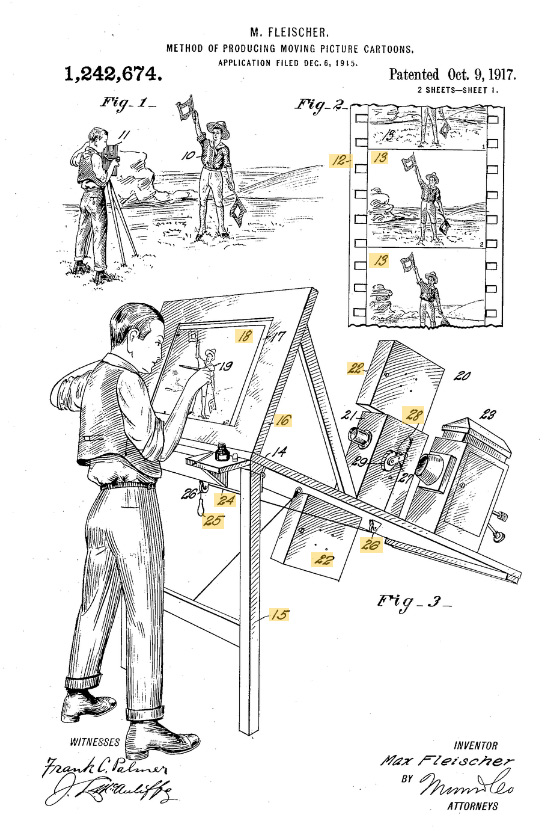[09:59 Thu,12.December 2019 by Thomas Richter] |
In early animated films, the movements of characters were usually very awkward - it was only the invention of Rotoscoping by the animation pioneer Max Fleischer, patented in 1917, that made it possible to realistically move drawn figures. The step-by-step projection of individual images of a person&s movements from behind onto the drawing surface of an animator made it possible to transfer the real movements to a drawn figure. Modern motion (and also facial) capturing is a further development of this technique, which also uses real movements as a model for animations - but spatially and abstractly. This enables the quasi-automated animation of arbitrary virtual figures. Fleischers Studio also invented an early multi-layered animation device that allowed the independent movement of different parts of the background to create the illusion of depth, leading to even more realism.  Max Fleichers Rotoscoping Patent 1917 deutsche Version dieser Seite: Wie Animationen realistisch wurden: Die Erfindung des Rotoscopings |





